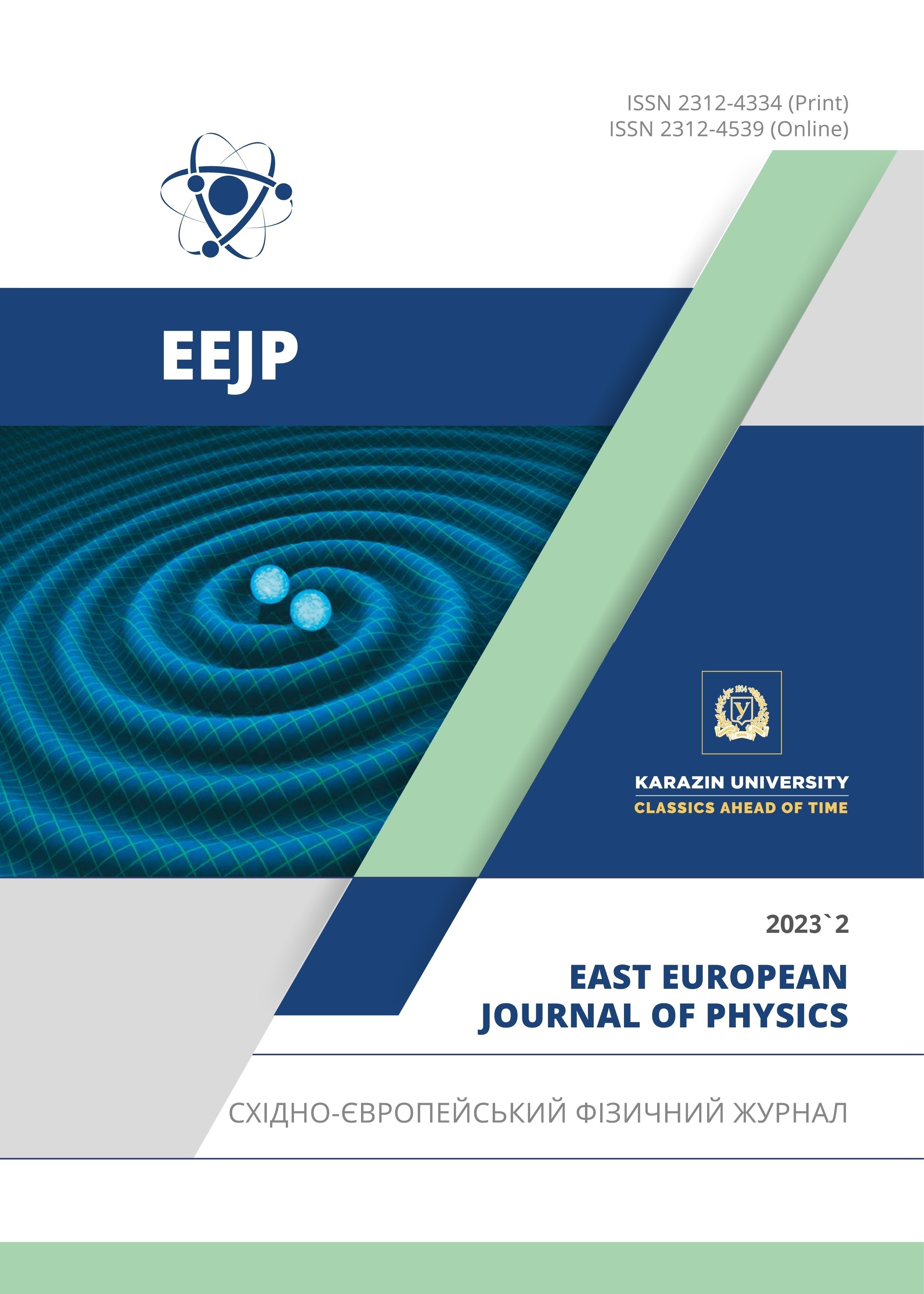On Accounting for Own Fields of Emitters when Describing Generation Modes
Abstract
The paper discusses three different modes of electromagnetic field generation by an ensemble of oscillators placed at the radiation wavelength in the one-dimensional case. The excitation of the resonator field is considered, which, as a rule, is determined by the geometry of the system, with and without taking into account the eigenfields of the emitters. The superradiance regime of the same ensemble of oscillators is also analyzed. In fact, superradiance is formed due to the emitters' own fields even in the absence of a resonator. It is noted that the maximum achievable amplitudes of induced fields both in the superradiance regime and in the regime of excitation of the resonator field are comparable. This makes us think about the role of the self-fields of emitters in electronic devices. It is shown that in describing the resonator excitation mode, in addition to the resonator field, it is also necessary to take into account the sum of the natural fields of the emitters in the active zone. Synchronization of emitters leads not only to an increase in the resonator field, but also, as in the superradiance regime, it significantly increases the amplitude of the sum of the oscillator fields. It is shown that in the practically interesting case of open systems (dissipative generation modes), taking into account the eigenfields of the emitters significantly reduces the characteristic time for the development of the generation process and increases the maximum achievable oscillation amplitude. This account also changes the conditions for achieving the maximum energy flow from the system. This can change the operating point of the generation process, which is determined by the requirement for the maximum rate of energy output from the system.
Downloads
References
A. NordSieck, “Theory of large Signal Behavior of Travelingwave amplifiers,” Proc. IRE, 41(5), 630-631 (1953). https://doi.org/10.1109/JRPROC.1953.274404
V.D. Shapiro, and V.I. Shevchenko, “Interaction of a wave-part in nonequilibrium media,” Radiophysics and Quantum Electronics, 19, 543-560 (1976). https://link.springer.com/article/10.1007/BF01034470
A.N. Kondratenko, and V.M. Kuklin, Fundamentals of plasma electronics, (Energoatomizdat, Moscow, 1988). https://www.researchgate.net/publication/367500092_Osnovy_Plazmennoj_Elektroniki
R.J. Briggs, Electron-Stream Intection with Plasmas, (MIT Press, Cambridge, 1964).
V.U. Abramovich, and V.I. Shevchenko, “Nonlinear Theory of Dissipative Instability of a Relativistic Beam in a Plasma” Soviet physics JETP, 35(4), 730-732 (1972). http://www.jetp.ras.ru/cgi-bin/dn/e_035_04_0730.pdf
A.N. Kondratenko, V.M. Kuklin, and V.I. Tkachenko, “Nonlinear theory of fuel instability in the collision plasma,” Izv. Universities. Radiophysics, 21(10), 1535-1537 (1978). https://radiophysics.unn.ru/sites/default/files/papers/1978_10_1535.pdf
A.G. Zagorodniy, A.V. Kirichok, V.M. Kuklin, and A.V. Priymak, “Modulation of the integral field of multi-muddy beams in plasma,” East Eur. J. Phys. 1(2), 53-66 (2014). https://periodicals.karazin.ua/eejp/article/view/129/40. (in Russian)
V.L. Ginzburg, “Radiation of evenly moving sources (Vavilov-Cherenkov effect, transitional radiation and some other phenomena),” UFN, 166(10), 1033-1042 (1996). http://elibrary.lt/resursai/Uzsienio%20leidiniai/Uspechi_Fiz_Nauk/1996/10/r9610a.pdf. (in Russian)
V.M. Kuklin, “On the Nature of Coherens in the System of Oscillators,” PAST, 4, 91-95 (2019). https://vant.kipt.kharkov.ua/ARTICLE/VANT_2019_4/article_2019_4_91.pdf
R.N. Dicke, “Coherence in Spontaneous Radiation Processes,” Physical Review, 93(1), 99-110 (1954). https://doi.org/10.1103/PhysRev.93.99
V.M. Kuklin, D.N. Litvinov, S.M. Sevidov, and V.E. Sporov, “Simulation of Synchronization of Nonlinear Oscillators by the External Field,” East Eur. J. Phys. 4(1), 75-84 (2017). https://periodicals.karazin.ua/eejp/article/view/8561
Kuklin V.M., D.N. Litvinov, and V.E. Sporov, “Superradiance of Stationary Oscillators,” PAST, 4(116), 217-220 (2018). https://vant.kipt.kharkov.ua/ARTICLE/VANT_2018_4/article_2018_4_217.pdf
V.M. Kuklin, and E.V. Poklonskiy, “Dissipative Instabilites and Superradiation Regimes (Classic Models),” PAST, 4(134), 138-143 (2021). https://vant.kipt.kharkov.ua/ARTICLE/VANT_2021_4/article_2021_4_138.pdf
V.M. Kuklin, Selected Chapters (Theoretical Physics), (V.N. Karazin Kharkiv National University publishing, Kharkiv, 2021). http://dspace.univer.kharkov.ua/handle/123456789/16359
A.N. Didenko, V.P. Grigoryev, and Yu.P. Usov, Powerful electronic beams and their use, (Atomizdat, Moscow, 1977). (in Russian)
M.V. Kuzelev, and A.A. Rukhadze, Electrodynamics of dense electron beams in plasma, (Nauka, Moscow, 1990).
Copyright (c) 2023 Volodymyr M. Kuklin, Eugen V. Poklonskiy

This work is licensed under a Creative Commons Attribution 4.0 International License.
Authors who publish with this journal agree to the following terms:
- Authors retain copyright and grant the journal right of first publication with the work simultaneously licensed under a Creative Commons Attribution License that allows others to share the work with an acknowledgment of the work's authorship and initial publication in this journal.
- Authors are able to enter into separate, additional contractual arrangements for the non-exclusive distribution of the journal's published version of the work (e.g., post it to an institutional repository or publish it in a book), with an acknowledgment of its initial publication in this journal.
- Authors are permitted and encouraged to post their work online (e.g., in institutional repositories or on their website) prior to and during the submission process, as it can lead to productive exchanges, as well as earlier and greater citation of published work (See The Effect of Open Access).








